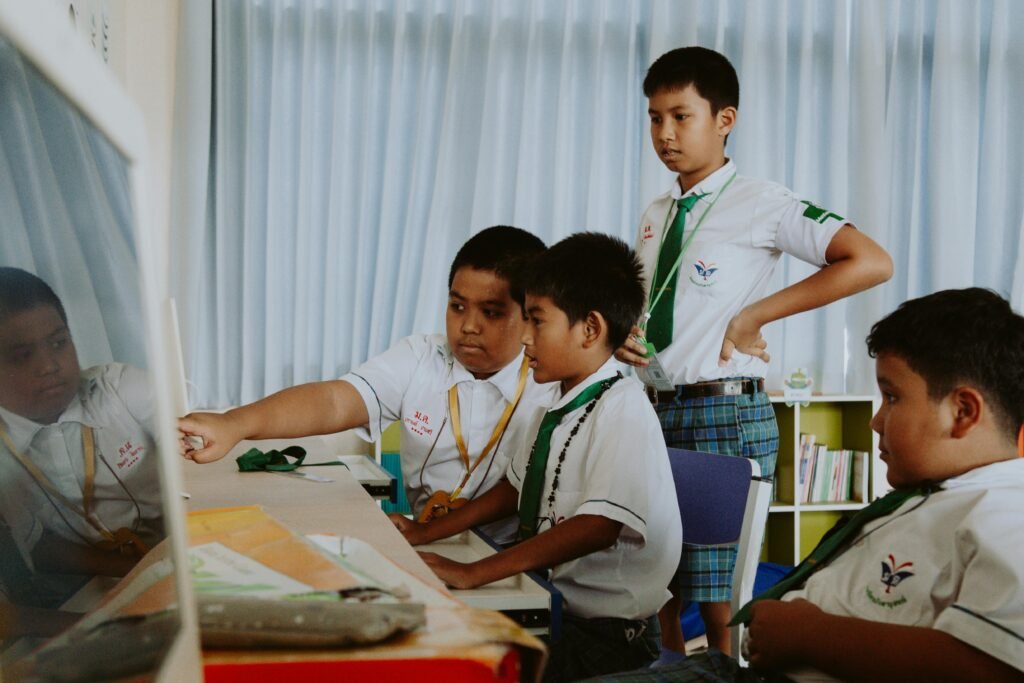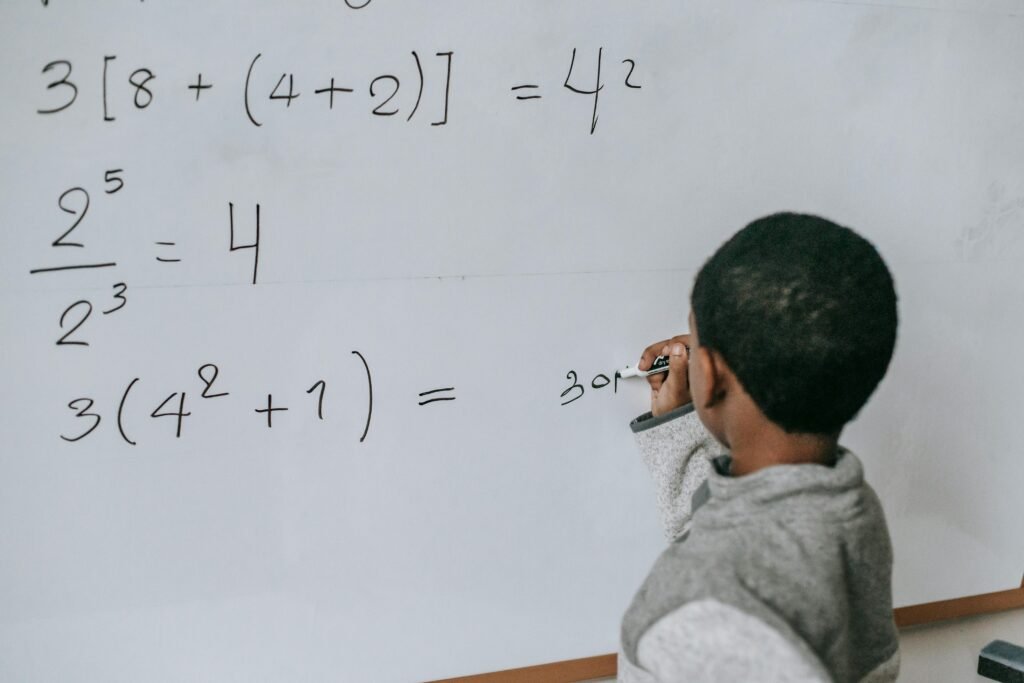We all want our kids to learn well. We want them to stay focused in school, listen to their teachers, and do their best. But there’s a big problem creeping into classrooms today. It’s not loud. It doesn’t make a mess. But it steals attention fast. It’s the screen.
Students check their phones on average every 10.5 minutes during class
Imagine trying to read a book, but every ten minutes someone taps your shoulder. That’s what it feels like when a student checks their phone in class. It may not seem like a big deal at first, but these tiny breaks steal focus. One glance turns into five, then ten. And before you know it, a big part of the lesson is lost.
When a student checks their phone every 10.5 minutes, their brain has to switch from learning mode to checking mode. This kind of “task-switching” is hard on the brain. It uses energy and makes it harder to stay focused. The student might try to come back to the lesson, but their brain needs time to catch up again. That’s how just a few seconds of distraction can hurt an entire lesson.
So what can we do? First, help kids build screen habits. Make it a rule at home: no phones while doing homework. Talk about how phones can trick us into thinking we’re just checking “for a second,” but that second grows quickly. Also, teach kids how to silence notifications or use “Do Not Disturb” mode during class.
Teachers can help too. In the classroom, having a phone basket or a phone-free zone works wonders. Make it fun—turn it into a challenge. “Let’s see if we can all go an hour without checking!” Gamify it, reward it, and show students how strong their brains feel when they focus.
Parents, talk about it often. Ask your child after school, “Did you keep your phone away during class?” Make it a normal part of your check-in. Over time, small reminders help build lasting habits.
92% of college students admit to using their phones during class for non-class purposes
This number is huge. Almost every student admits it. That means it’s not just a few kids who can’t focus—it’s nearly all of them. Phones have become so normal that using them during lessons doesn’t even feel wrong anymore. But it’s pulling them away from the very thing they’re in class for.
When students use their phones for things like texting, checking social media, or watching videos during class, they’re not just missing a few words. They’re missing key ideas, connections, and deep understanding. And they’re also training their brain to ignore focus and chase quick entertainment instead.
One way to help is by creating screen routines. Teach students when it’s okay to use their phone, and when it’s not. Set clear limits. For college students especially, self-control is key. They don’t always have teachers watching closely, so they need tools to help them stay in charge.
Apps like Forest or Focus Keeper can help. These apps turn focus into a game. You stay off your phone, and you grow a tree or earn points. It sounds simple, but it works. Also, teach students how to keep their phones out of reach when studying—just turning the phone upside down isn’t enough.
Remind them why they’re in class. Help them picture their goals—graduation, a good job, making a difference. Every time they choose to focus, they’re stepping closer to that goal.
1 in 3 students say screen distractions have negatively affected their academic performance
This one really hits home. One out of every three students is saying, “My grades got worse because of screens.” That’s not a small number. It means that screens are doing more than stealing a few minutes—they’re changing report cards, test scores, and confidence.
The scary part? Many students don’t even realize it’s happening until it’s too late. They might think, “I’m fine,” until they see a low grade or feel lost in a lesson. That’s why talking about screen impact early is so important.
Start by helping kids notice the signs. Do they forget what the teacher said? Do they feel like class goes by in a blur? These could be clues that screens are stealing their focus. Keep conversations kind and open—don’t blame, just guide.
Create a simple focus journal. Ask your child to jot down how focused they felt in class that day, and whether they used their phone. Over time, they’ll see the pattern for themselves. “Wow, on days I didn’t touch my phone, I understood way more.”
If your child is struggling in school, screen habits might be the missing puzzle piece. Try a phone-free school week challenge at home. Talk with teachers. Work together as a team. Even small changes can make a big difference.
70% of teachers say screens have significantly increased student distraction
When teachers speak up, we should listen. They’re in the classroom every day. They see what works and what doesn’t. And right now, 70% of them are saying the same thing: screens are making it harder for students to pay attention.
This stat tells us that the screen issue isn’t just in students’ heads—it’s being felt by the people trying to teach them. Teachers want to give their best, but when students are glued to their devices, learning gets lost.
So how can we support teachers? First, by backing up screen rules at home. If a teacher has a no-phone policy, talk to your child about why that’s a good thing. Support the rule, not fight it. When parents and teachers work together, kids are more likely to follow through.
Also, share tools with teachers. Many classrooms now use tools like Yondr (lockable pouches for phones) or set up screen-free hours. If your school doesn’t have these, suggest them. Sometimes one simple system can change the whole class culture.
Most importantly, help your child see teachers as partners. They’re not being “mean” when they ask for phones to be put away—they’re trying to protect the learning space. Encourage your child to thank their teachers when they help them stay focused.
When students, parents, and teachers work together, screen distractions don’t stand a chance.
60% of middle and high school students admit to texting during lessons
Texting during class has become common, especially in middle and high school. But just because it’s common doesn’t mean it’s harmless. When students text during lessons, they miss more than just a few seconds—they miss the flow of learning.
In school, lessons build step by step. If a student checks out to send a message, they might come back and feel lost. That feeling builds up over time. They stop raising their hand. They stop trying. And slowly, they start to believe they’re “bad at school,” when really, they just got distracted.
Talk to your child about the power of presence. Being fully there, with both body and mind, helps them understand more, ask better questions, and enjoy learning again.
One simple tip is to help them set up “texting zones” in their day. For example: “I’ll check texts before school, at lunch, and after school—but not during lessons.” Give them words to use if friends pressure them: “I’ll text you later—need to focus now.”
Also, praise your child when they make the right choice. Say things like, “I’m proud of you for keeping your phone away today. That shows maturity.” These small moments build pride and self-control.
Phones will always be there. But if we teach our kids how to use them wisely, learning won’t get lost in the shuffle.
50% of students say they are more likely to miss instructions when screens are accessible
Half of all students say they miss what the teacher is saying if their phone or tablet is nearby. That’s a big deal. It means that just having the screen within reach—even if they’re not using it—can be enough to throw off learning.
When screens are accessible, the brain stays alert to every ping, buzz, or light-up. Even silent notifications can pull attention away. This constant readiness to check the screen stops students from giving their full focus to instructions. And when instructions are missed, everything else becomes harder—homework, classwork, group projects, and tests.
What can help? Try setting up learning zones at home and in class. That means having a table, desk, or space where screens are either turned off or placed out of reach. Just the act of moving a phone away helps the brain relax and focus better.
Teach students to recognize what “focused” feels like. After a screen-free study session, ask, “Did you notice how much clearer things felt today?” Helping them connect actions with results is powerful.
Also, introduce quick self-checks: “Did I hear all the instructions?” “Do I need to ask the teacher to repeat anything?” This small habit encourages active listening and responsibility.
For younger kids, using timers can help too. Set a 20-minute no-screen study time, then a 5-minute break to check the phone if needed. These small breaks feel like rewards and keep them motivated without hurting learning.
Multitasking with screens can reduce memory retention by up to 40%
Multitasking sounds smart, right? Doing two things at once—like listening to a lesson while checking messages—might seem efficient. But science says it’s the opposite. When students try to learn and use screens at the same time, their brain can’t keep up. In fact, they remember up to 40% less than if they just focused on one task.
That’s a huge loss. Imagine spending hours in school and only taking in a little more than half of what was taught. That’s frustrating for students, teachers, and parents alike.
So how do we fix this? First, make sure kids understand that multitasking is a myth when it comes to learning. They might think they’re “good at it,” but research shows it hurts everyone—even adults.
Teach kids about “single-tasking.” That means giving full attention to just one thing at a time. Not checking texts while writing notes. Not switching tabs while listening to the teacher. One task. One brain. Better results.
Make it a challenge. Ask your child to try “20 minutes of single-tasking” and see how much more they learn. Celebrate their wins: “You focused so well today—look how much you finished!”
For older kids, tools like the Pomodoro technique work great. Study hard for 25 minutes, then take a short break. This builds focus in a way that still gives space for rest.
Also, talk about how memory works. When the brain is overloaded, it skips storing facts deeply. Help them realize that deep focus isn’t just about today—it’s what helps them remember tomorrow and beyond.
Students who use digital devices for unrelated activities score 11% lower on tests
This stat should be a wake-up call for all of us. When students use their devices during class to do things that aren’t related to learning—like browsing, texting, or gaming—they end up scoring about 11% lower on their tests. That’s a whole letter grade gone, just because of distractions.
It’s not that the students are lazy or not smart. Often, it’s the constant back-and-forth between what they’re supposed to do and what the screen pulls them into. Their focus is scattered. Their brain can’t go deep into any one subject.
What can we do? First, make screen use a conscious choice. Instead of banning screens completely, teach kids to ask themselves, “Is this helping me learn or pulling me away?” Giving them that control builds responsibility.
Teachers can also help by making device use purposeful. “We’re using tablets for this activity, but then they go away.” Clear boundaries, stated often, help students stay on track.
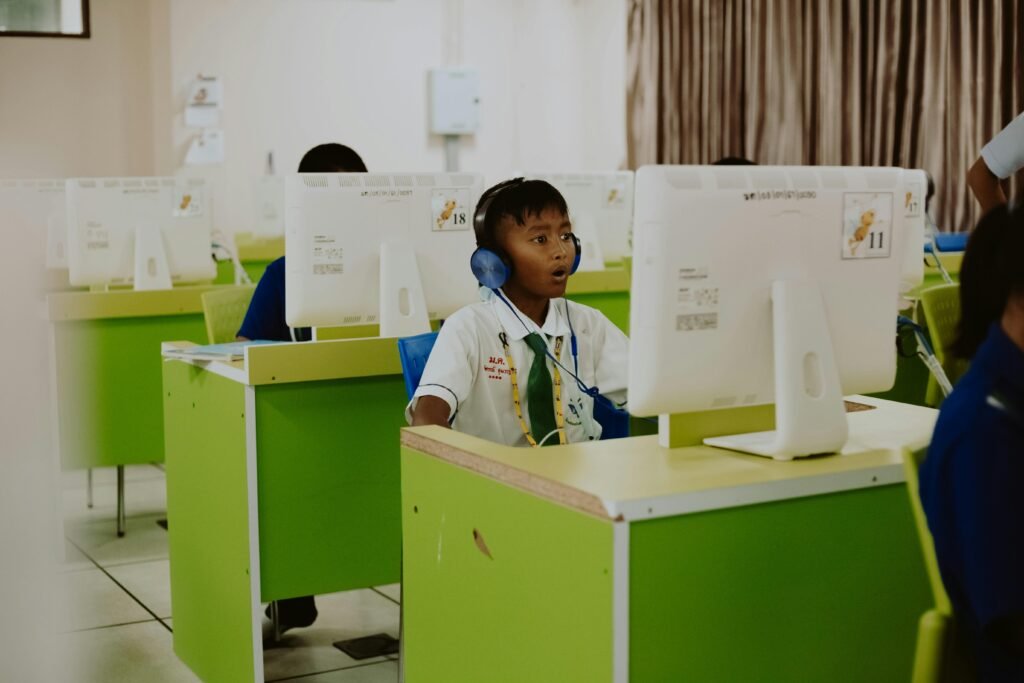
At home, you can do mock study sessions. Sit with your child and notice when their focus slips. Ask, “Did that help or hurt your studying?” Reflect together.
And when test time comes, talk about how to review without screens nearby. Put phones in another room. Use printed notes. Train their brain to focus deep—because that’s how real learning sticks.
80% of educators believe screen use during class leads to less student engagement
Teachers care deeply about their students. They work hard to make lessons fun and meaningful. But when screens become a distraction, all that effort can feel like it’s wasted. That’s why 80% of educators believe that screens are making students less engaged.
Engagement isn’t just about sitting still. It’s about being curious, asking questions, sharing ideas. But when screens pull attention away, students stop participating. They miss the magic of learning. And once that habit sets in, it’s hard to break.
So how do we help teachers get students back? First, make screen rules clear and fair. Involve students in setting them. Ask, “What do you think helps us stay focused?” When kids help create the rules, they’re more likely to follow them.
Parents, this matters at home too. If your child is used to watching a video every few minutes, it will be harder for them to sit through a lesson. Build screen-free time into your daily routine. It might be quiet reading, hands-on activities, or even just talking face-to-face.
Also, help kids notice how engagement feels. When they take part in class, how does it feel afterward? Proud? Excited? Confident? Tie those feelings to their effort.
And finally, support teachers. Send a kind note. Say, “Thanks for helping my child stay focused.” That kind of encouragement builds stronger teams—and stronger students.
A study showed that 10 minutes of screen use can disrupt up to 30 minutes of focused learning
This might be the most surprising stat yet. Just 10 minutes on a screen can throw off the next 30 minutes of learning. It’s like spilling water on a puzzle—you have to stop, clean up, and refocus before you can keep going.
Why does this happen? Because switching tasks takes effort. The brain has to pause, adjust, and restart. And even after putting the screen away, the brain still lingers on what was seen. That’s why recovery takes so long.
The good news is, once we understand this, we can plan better. Teach kids to give themselves full focus windows. “For the next 30 minutes, no screens at all.” After that, reward their effort with a break.
Make this visual. Use a kitchen timer, an hourglass, or a clock. Let them see the time passing. This turns focus into a game they can win.
Also, explain the “spillover” effect. Help them see that one short distraction can eat up way more time than they thought. This knowledge builds smart habits.
For teens, talk about the value of time. Ask, “What would you do with an extra 30 minutes of clear thinking every day?” Help them see that staying focused isn’t a punishment—it’s a gift they give themselves.
90% of students bring smartphones to school, regardless of school policy
Smartphones are everywhere. Whether schools allow them or not, 9 out of 10 students still bring their phones to class. That means even the best school rules can only go so far—because the device is already in the backpack, in the pocket, or sometimes right in the hand.
This stat shows us that we need more than policies. We need a mindset change. We need to help students understand why the rules are there and how screens affect their learning.
Start by talking with your child about why they take their phone to school. Is it for safety? Boredom? Just habit? Understanding the “why” can help you guide better solutions.
If safety is a concern, teach them how to keep the phone off but nearby in case of emergency. If it’s boredom, talk about what else they could do during free time—reading, chatting with a friend, or drawing. And if it’s just habit, challenge them to try one school day without it. Just one. See how it feels.
Schools can help too. Instead of banning phones, teach healthy habits. For example, have students drop their phones into a storage box at the start of class. Make it part of the routine. No shame, no blame—just good learning habits.
And most of all, make phone use something students can be proud of. Say, “You left your phone away all day? That’s awesome. That shows discipline.” Reinforce the good choices. Over time, students will see their phones differently—not just as a toy, but as a tool they choose to control.
59% of teens say they feel pressure to respond to notifications even during lessons
This stat is one of the most important ones for parents to understand. More than half of teens say they feel pressure to reply to texts or messages—even during class. This isn’t just distraction. It’s stress. It’s social pressure. It’s fear of missing out.
Today’s students live in a world where a message can come at any moment. And if they don’t reply quickly, they worry they’ll seem rude, left out, or even lose a friend. That’s a lot of weight to carry—especially while trying to learn math or science.
One of the best things we can do is talk about this pressure openly. Let your child know it’s okay to take a break from responding. Show them how to set healthy boundaries with friends. For example, they could say, “Hey, I can’t text during class, but I’ll catch up with you later.” That one line can take away a lot of stress.
You can also help them use tools like “Focus Mode” or “Do Not Disturb” during school hours. These settings block notifications without turning off the phone completely. That way, they stay connected without being pulled in.
Teachers can help too by building screen breaks into the day. If students know they’ll get 5 minutes at the end of class to check messages, they might feel less anxious during the lesson.
And most importantly, show empathy. This pressure is real. Don’t make your child feel bad about it. Instead, guide them toward strong, kind ways to handle it. Over time, they’ll grow more confident in setting their own limits.
3 out of 5 students admit to browsing social media during class
Scrolling through Instagram or TikTok might feel harmless. But when students do it during lessons, they’re trading real learning for quick entertainment. And 3 out of 5 students say they do it.
Social media is built to be addictive. One video leads to another. One scroll turns into five. And before the student knows it, they’ve missed a whole part of the lesson. Even worse, their brain is now full of unrelated noise—and it’s harder to get back on track.
What can we do? First, don’t shame your child for using social media. Instead, talk about how these apps are designed to pull attention. It’s not just them. It happens to everyone.
Next, help them set up “app blockers” or screen time limits. Many phones now come with built-in controls. You can even create schedules so apps are blocked during school hours. Sit down with your child and do it together, not as a punishment, but as a learning moment.
Teachers can encourage tech mindfulness too. For example, start class with a one-minute “focus reset” where students turn off apps and breathe. This helps clear their mental space before diving into the lesson.
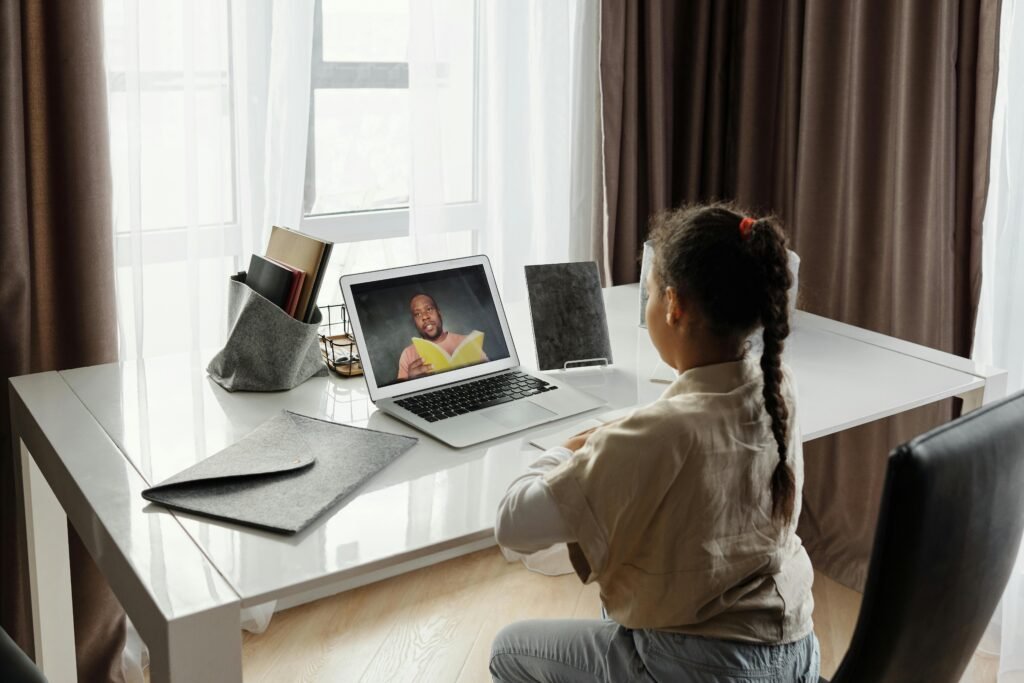
You can also introduce fun offline breaks at home. After school, instead of jumping straight into scrolling, encourage a short walk, drawing, or music. Help their brain rest in ways that don’t involve a screen.
And if they slip up? That’s okay. Keep guiding. The goal isn’t perfection. It’s progress. And every time they choose focus over a scroll, they’re building strength.
77% of teachers report that screen-related distractions have increased in the past 5 years
This stat shows us something serious: the screen problem is growing fast. In just five years, three-quarters of teachers say distractions have gotten worse. That means more students zoning out. More missed instructions. More stress for teachers.
Why is it getting worse? Because screens are getting smarter, faster, and more tempting. Notifications are endless. Apps are built to keep users hooked. And students, even the good ones, are struggling to resist.
To fight this growing trend, we have to update how we talk about screens. This isn’t just about “being on the phone too much.” It’s about teaching self-control, focus, and balance in a world full of noise.
Parents can play a big part by being screen role models. If your child sees you checking your phone at dinner, they learn it’s normal. But if they see you putting it down and saying, “Let’s talk,” they learn something more powerful.
Teachers can build “tech awareness” into lessons. Just a 5-minute chat about digital habits once a week can spark big change. Ask questions like, “What helps you focus best?” or “How do you handle app distractions?”
At home, try a screen detox weekend. Just one weekend without social media or games can reset your child’s habits. Make it fun, not a punishment. Plan board games, movie nights, or even simple baking together.
And finally, remind your child—and yourself—that focus is a superpower. In a world full of distractions, the ability to pay attention is rare and valuable. Help them see that every time they choose to focus, they’re choosing their future.
Students lose an average of 5 minutes per hour of class time to screen distractions
Let’s break this down: in every hour-long lesson, students are losing about 5 minutes just to distractions from screens. That might not sound like much at first, but over the course of a school day, that’s about 30 minutes gone. A whole half hour that could have been used to understand a tough concept or ask a good question. Over a week, that’s hours of lost learning.
The truth is, these small bits of distraction add up quickly. A quick glance at a notification. A short reply to a message. A scroll through a feed. Each one chips away at focus. And most of the time, students don’t even notice it happening.
To fix this, students need strategies they can actually use—not just “pay attention more.” One simple but powerful method is “screen timing.” Teach kids to check the time before they pick up a device. Then, once they’re done, check the time again. Ask, “How long was I really on it?” This awareness builds accountability.
Teachers can create “focus check” times in the day where everyone puts away devices and reflects on how much they’ve focused so far. It’s not about blame—it’s about practice.
At home, try time-limited phone use during homework. Set a timer for 25 minutes of deep study, followed by a 5-minute phone break. These planned breaks feel better and are less likely to become long distractions.
Also, help your child notice how good it feels to complete work with focus. “You finished your homework fast today—bet it’s because you stayed focused!” Reinforcing the reward of attention builds stronger habits over time.
28% of classroom learning time is lost due to digital distractions
This is one of the most alarming stats. More than a quarter of learning time is lost in classrooms because of screen-related distractions. Imagine a full school day, and then erase the first two class periods—that’s how much is being missed. That’s math problems never practiced. Science topics never understood. Books never finished.
This kind of loss doesn’t just hurt grades—it hurts confidence. Students who fall behind because they weren’t paying attention often feel confused and ashamed. They might think they’re not smart, when in fact they just didn’t have the chance to focus.
To tackle this, schools need a strong tech plan. That doesn’t mean getting rid of devices entirely. It means using them with purpose. Teachers can set clear “tech time” and “tech off” moments. For example: “For the next 15 minutes, we’re writing on paper—no screens.” These small signals help students reset.
Parents can support this by asking better questions at home. Instead of “How was school?”, ask, “Did your screens help you learn today?” or “Were there any times you felt distracted?” These questions show your child that focus matters.
And for students, teach them the value of presence. When they’re truly engaged, learning feels easier. Fun, even. Help them notice the difference between distracted learning and deep, focused moments. Once they feel that, they’ll want more of it.
Over time, if schools, teachers, and parents work together, we can win back that lost time—minute by minute, lesson by lesson.
85% of students say that turning off notifications helps them concentrate better
This stat is hopeful. It shows that most students know what helps them focus. When they turn off notifications, they concentrate better. That means the fix is simple—and it’s in their hands.
The tricky part? Getting them to actually do it.
Many students feel like they can’t turn off notifications. What if they miss something important? What if someone needs them? That’s why this isn’t just a technical issue—it’s an emotional one.
Start with a challenge: one day with all notifications off during school hours. Just one day. Ask them how it felt. Most will say, “I felt more clear. More in control.” That feeling becomes the motivation to do it again.
For younger kids, go over settings together. Show them how to mute notifications on apps, turn off pop-ups, and even use “focus mode” or “study mode” on their devices.
At school, teachers can give students a few minutes at the start of the day to set their phones to silent or turn off alerts. Make it a normal part of the day, just like putting away your lunch or getting out your notebook.
And most of all, praise the effort. Turning off distractions takes courage. When your child chooses to focus, even for just one class, that’s a win worth celebrating.
Students perform 20% better on comprehension tasks when screens are removed
This is a big one. Take away the screens, and suddenly students understand more—20% more. That’s not a small boost. That’s the difference between confusion and clarity. Between “I don’t get this” and “I got it!”
Screens themselves aren’t the enemy. It’s the distractions they bring—the notifications, the apps, the temptation to open something else. When you remove that noise, the brain can finally settle in and focus deeply.

Teachers can test this in small ways. Try one reading session with devices away. Compare comprehension afterward. Let students feel the difference, not just hear about it.
At home, set up screen-free homework zones. A quiet table. No background TV. No phone nearby. Just books, paper, and maybe a timer. Let them experience how quickly they get things done without digital distractions.
Also, talk about how good focus feels. Ask after study time, “Was it easier to understand without your phone next to you?” Help them connect the dots. When they see that removing screens makes learning easier, they’ll want to do it more.
And if they struggle? That’s okay. It takes time. Encourage them with gentle steps. One subject without a screen. Then two. Then a full homework hour. Each success builds confidence and better habits.
45% of teachers feel powerless to manage screen usage in class
Almost half of all teachers say they feel helpless when it comes to managing screens in the classroom. That’s a hard thing to hear. These are professionals who care deeply about teaching—and yet they feel like they’re losing control of the room because of screens.
Why does this happen? Partly because the rules around screen use aren’t always clear or enforced. One student may be allowed to use a phone for notes, another might be checking social media, and a third is playing a game—and it all looks the same from a distance.
The result? Frustrated teachers. Distracted students. Lessons that get interrupted again and again.
Parents can step in to help here. First, ask your child’s teacher what their screen policy is. Support it at home. If the teacher says “no phones during lessons,” repeat that rule at home and explain why it matters.
Also, advocate for better tech boundaries at school. Suggest clear rules, structured device times, or even phone pouches that lock devices during class. These aren’t punishments—they’re tools to support real learning.
Teachers can also build routines around focus. Start every class with a “tech check”—a quick reminder to put devices away. Or invite students to reflect weekly: “When did I focus best this week?” These simple tools give students ownership over their learning.
Above all, support your teachers. They’re trying their best. A kind message or a shared solution can go a long way. When teachers feel supported, they feel stronger—and students benefit from it.
33% of students admit they find it hard to focus without checking their phones
This is one of the most revealing stats. One-third of students say they struggle to focus if they’re not checking their phones. It’s not just that phones are a distraction—it’s that for many students, constant checking feels necessary.
This is a habit loop. Their brain is trained to expect a ping, a buzz, or a scroll every few minutes. Without it, they feel bored, restless, or even anxious. And that makes focusing on a lesson much harder.
The key here is not to blame the student. It’s to help them slowly retrain their brain. Focus is a skill. And like any skill, it gets stronger with practice.
One great way to start is with short “focus stretches.” Ask your child to go 10 minutes without checking their phone. Then 15. Then 20. Celebrate each win. Show them that the feeling of focus gets easier over time.
You can also create a “focus corner” at home—no phones allowed. Let it be a calm space with books, paper, and quiet. It becomes a safe place for their brain to slow down.
At school, mindfulness activities like journaling, breathing, or quiet reading can help reset students’ focus. Even a few minutes of stillness teaches their brain that it’s okay not to be stimulated all the time.
And when your child feels proud of focusing without a phone, let them know. Say, “I saw you working without checking your screen—that was amazing!” That pride builds real change.
Classrooms that restrict screen access see a 17% increase in overall test scores
Here’s one stat that should give us all hope. When schools limit screen use, test scores go up—by 17%. That’s nearly two full grade jumps for some students. Why? Because when distractions go down, learning goes up.
This doesn’t mean students should never use devices. It just means that when screens are used on purpose, learning improves. When they’re used as a crutch or entertainment during class, learning suffers.
If your child’s school already has screen limits, great—support those rules at home. If not, consider talking to school leaders about how smart restrictions can help. Share this stat. Real numbers make a strong case.
At home, mimic the same structure. For example, “During study time, no phone use unless it’s for research.” Or “If you need your device, use it in the living room, not in your room.” Simple boundaries build better habits.
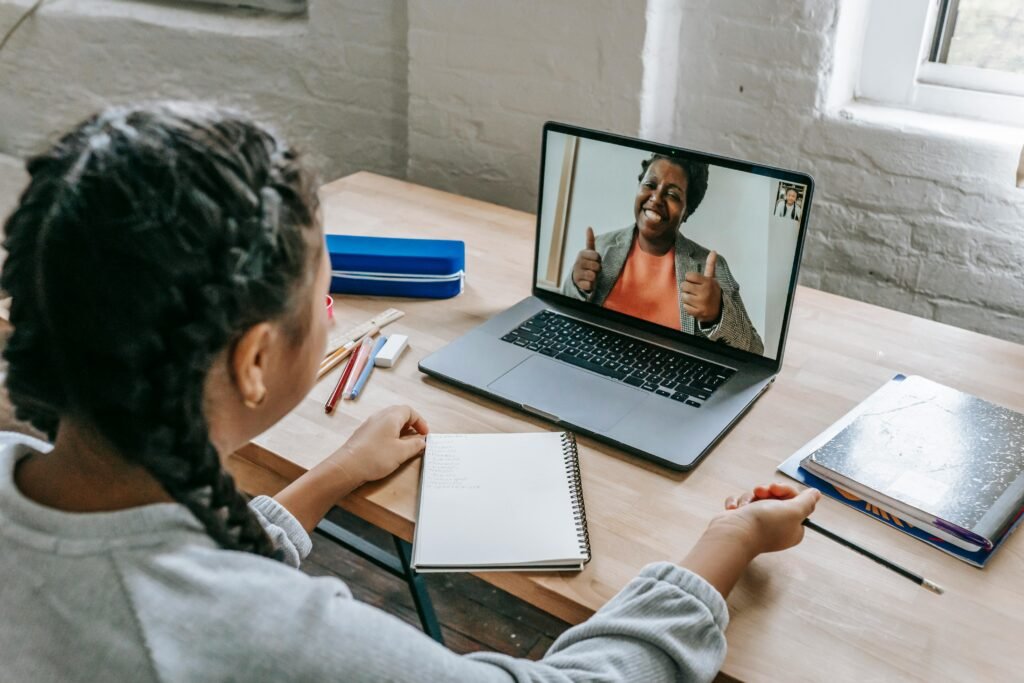
Teachers can also use this stat to inspire students. Share it with them! Say, “Did you know that just by keeping screens away, your scores could go up almost 20%?” Kids love to see how small choices lead to big wins.
Use this as motivation, not punishment. Screen control isn’t about rules—it’s about results. Better focus, better scores, and better confidence. That’s something every student wants.
60% of students say they use screens to avoid boredom, even if it means missing classwork
Boredom is normal. It’s part of life. But in today’s world, students have been trained to fix boredom instantly—with a tap, a swipe, or a scroll. That’s why 60% of students say they use their screens just to avoid feeling bored—even when it costs them learning time.
This stat is more about emotional habits than just technology. Kids are learning to escape boredom, instead of sitting with it or using it to create something new.
Parents, this is where you can step in. Help your child get more comfortable with “empty moments.” Don’t rush to fill every silent space with entertainment. Let them get bored sometimes—and then help them find a healthy way out of it.
Teach alternatives: doodling, stretching, walking, writing in a journal. These may seem simple, but they build patience, creativity, and calm. Over time, your child will start to reach for these tools instead of the screen.
Teachers can also build boredom breaks into class. Let students do something creative or reflective for a few minutes. This gives their brain a reset—without a screen.
And talk about boredom openly. It’s not bad. It’s just a signal. A chance to try something new. When kids understand that, they stop fearing it—and start using it.
Students distracted by screens during lectures retain 25% less information
This stat makes it crystal clear: if a student is distracted by a screen during a lesson, they walk away remembering 25% less than their focused peers. That’s a quarter of the lesson—just gone.
It doesn’t matter how smart the student is. Or how well the teacher explained the material. If attention is split, memory drops. Fast.
The brain isn’t a file cabinet. It doesn’t just “save” things automatically. It needs focus, repetition, and emotional connection to store information. Distractions interrupt that process, making it harder for students to recall what they learned—even just minutes later.
So what can we do? Focus on one-task learning. Teach students to listen without doing other things. No screens. No side chats. Just them and the lesson.
Help them build “mental checkpoints.” After class, ask, “What’s one thing you learned today?” This simple habit helps seal learning in memory.
At home, review school material without a screen nearby. Use printed worksheets, written flashcards, or even teach-back games—where your child teaches you what they learned. The act of explaining builds stronger memory.
And most importantly, teach kids that memory isn’t about trying harder—it’s about focusing smarter. When they protect their attention, their brain does the rest.
78% of high school students say they’ve secretly used phones during exams
This is a worrying stat. Nearly 8 out of 10 high school students admit to sneaking a peek at their phone during exams. It’s not just about cheating—it’s about how deeply screen habits have become part of their thinking. Even in high-stakes situations, they feel the urge to check their devices.
Why is this happening? Some students feel pressure to perform. Others just want to double-check something quickly. And some feel so tied to their phones that not checking during a test feels wrong, even if they know it’s against the rules.
What this stat shows us is that students aren’t just distracted—they’re dependent. And that habit doesn’t stop when the stakes are high.
The first step is to talk about it. Not in a scary or shaming way. Just ask: “Have you ever felt tempted to check your phone during a test?” Listen with curiosity, not judgment. Let your child know it’s okay to talk about their challenges.
Next, help students build confidence in their memory. Many reach for a phone not because they want to cheat, but because they don’t trust themselves. You can support this by encouraging daily study habits and self-quizzing at home.
Schools can help too. Clear policies, phone pouches, and honest conversations about integrity make a difference. When students understand the why behind the rule, they’re more likely to follow it.
Remind your child: using their brain and doing their best—whatever the result—is always worth more than a perfect score gained the wrong way. Integrity feels better than a few more points.
48% of college students check their devices more than 5 times per class
College classes are supposed to be a time for deep thinking, exploration, and focus. But when nearly half of all students are checking their phones five or more times during a single class, it’s clear something’s not right.
That’s not just five small distractions. That’s five moments when the student’s brain jumps from learning mode to screen mode. It takes energy to refocus after each one. Multiply that over an entire lecture, and the student ends up tired, behind, and confused.
What causes this? Sometimes it’s boredom. Other times it’s stress or habit. But often, it’s just the feeling that “something important might be happening” on their phone.
One strong strategy is to help students delay their response to that feeling. Teach the phrase: “I’ll check later.” This simple mental note builds self-control.
You can also challenge your child: “Try going one class with your phone completely off. See how it feels.” Most are surprised at how free and focused they feel without it buzzing nearby.
Encourage using old-school methods, like pen and paper notes, during class. These reduce the chance of distractions and increase memory retention.
And remind college students: they’re paying for this class—either directly or through time. Each moment of attention is an investment. Help them make the most of it.
40% of students say that seeing others on screens makes them more likely to check theirs
Distraction spreads. It’s not just about one student and one screen. When one person checks their phone, nearby students feel tempted to check theirs too. This is what researchers call a “social cue.” Our brains naturally follow what others are doing.

That’s why 40% of students say they’re more likely to check their devices just because someone else did. It’s contagious—and fast.
This matters because even students with strong focus skills can get pulled in. It only takes one friend opening their phone to throw off the entire row.
The fix? Awareness and group support.
Talk with your child about how powerful social cues are. Ask, “Have you ever checked your phone just because your friend did?” When they recognize the pattern, they can fight it better.
Encourage your child to be a focus leader in their class. Not by calling others out, but by setting a good example. Keeping their phone away, taking notes, making eye contact. Those behaviors are contagious too.
Teachers can use seat arrangements, group activities, and phone-free zones to reduce the impact of peer distraction. And when students see that staying off screens makes things easier, they start to lead each other in the right direction.
At home, talk about peer pressure—not just with behavior, but with screen habits too. Teach your child that it’s okay to say, “I’m focusing now, I’ll text later.” Those few words can protect their learning—and set a trend others might follow.
In schools with screen-free policies, student grades improved by 12%
This stat is a strong sign of hope. In schools where screen use is tightly controlled or removed during lessons, grades go up. Not by 1% or 2%—but by 12%. That’s a major jump.
This shows us that focus isn’t just a nice idea—it actually delivers results.
Students may resist at first. They’ll say they need their phone, or that they’re “good at multitasking.” But when the whole class has to put devices away, something shifts. Distractions drop. Participation goes up. Learning deepens. Confidence grows.
If your school doesn’t have a clear screen policy, talk with your child’s teachers or principal. Share this stat. Suggest trying a screen-free week. Results often speak for themselves.
At home, you can mimic this model. Try “phone away” hours for homework and study. Use a simple routine: put the phone in a box or basket until the work is done. Then, enjoy free time.
Let your child see the reward: “Look how fast you finished your homework today!” When students notice that focus helps them do more, they start to value it.
And if your child’s school does have a screen-free policy, support it 100%. Talk positively about it. Show your child how much you respect that rule. That support makes it more likely they’ll stick to it—and benefit from it.
67% of students feel anxious when away from their phone for more than 15 minutes
This is a modern challenge. Two-thirds of students feel anxiety after just 15 minutes without their phone. It’s not just boredom—it’s fear. Fear of missing something. Fear of being disconnected. Sometimes, even fear of being forgotten.
This anxiety isn’t a character flaw. It’s a result of how screens are designed. Constant notifications, quick replies, non-stop content—all of it trains the brain to expect something to always be happening.
So when that “something” stops, students feel unsettled.
To help, we need to build screen confidence. That means showing kids they’re okay—even when they’re offline.
Start small. Encourage your child to go 10 minutes without their phone, then talk about how it felt. Build from there. Make it a family challenge: “Let’s all put our phones away for dinner.” Show them it’s not scary—it’s freeing.
Teach calming tools for anxiety. Breathing exercises, walking, or journaling can help students cope without reaching for a screen.
Schools can support this by offering “quiet corners” or device-free activities during break times. Not as punishment, but as safe spaces to just be.
And most importantly, remind your child: their phone doesn’t define them. Their friends, their ideas, their talents—those are what really matter. The screen is just a tool. And they have the power to choose when and how to use it.
Screen distractions are linked to a 30% increase in classroom behavior issues
Screens don’t just affect focus. They also affect behavior. In fact, classrooms with high levels of screen use report up to 30% more behavior problems—things like talking out of turn, not following directions, being off-task, or acting out.
Why does this happen? Because screens create a constant pull on attention. Students who are distracted feel disconnected from the class. They may miss what’s going on, fall behind, and get frustrated. That frustration can turn into acting out. Or sometimes, the distraction itself just becomes too tempting—so students use their phones when they shouldn’t, and then get into trouble.
The solution? Consistency. Both at school and at home.
Teachers can create clear, firm screen expectations. Not just “no phones,” but why. “We want to make space for your brain to focus.” That message sticks better than just a rule.
Parents can support this by building similar boundaries at home. For example, no screens at the dinner table, or no multitasking during homework. The more often kids practice focus, the more it becomes their normal.
And if behavior issues come up, don’t jump to punishment. Ask questions. “Were you feeling bored or behind?” “Did you feel like you missed something earlier in class?” These questions help uncover the real issue.
Over time, as screen habits improve, behavior improves too. And that helps every student—not just the one who was distracted.
9 out of 10 students believe they would learn better if they used screens only when instructed
This stat is powerful because it comes straight from the students themselves. Most of them already know that screens are hurting their learning. And they believe they’d do better if they only used them when teachers asked them to.
That’s the silver lining. Students aren’t the enemy here. They’re aware. They want to do well. They just need support, structure, and practice to build better habits.
Parents, this is your moment. Sit with your child and ask, “What would it take to use your phone only when you really need it?” Let them talk. Listen closely. Then make a plan together.
Create a home agreement. Something simple like, “During homework time, we keep phones in the kitchen.” Or, “We check messages after study time, not during.” These boundaries work best when they’re shared decisions.
Teachers can empower students too. Let them help set the class rules. Ask, “What kind of phone policy helps you learn best?” Students who help make the rule are more likely to follow it.
This stat also reminds us: screen control isn’t about taking power away from students. It’s about giving it back to them. Helping them take charge of their focus. Helping them become stronger thinkers, better learners, and more confident people.
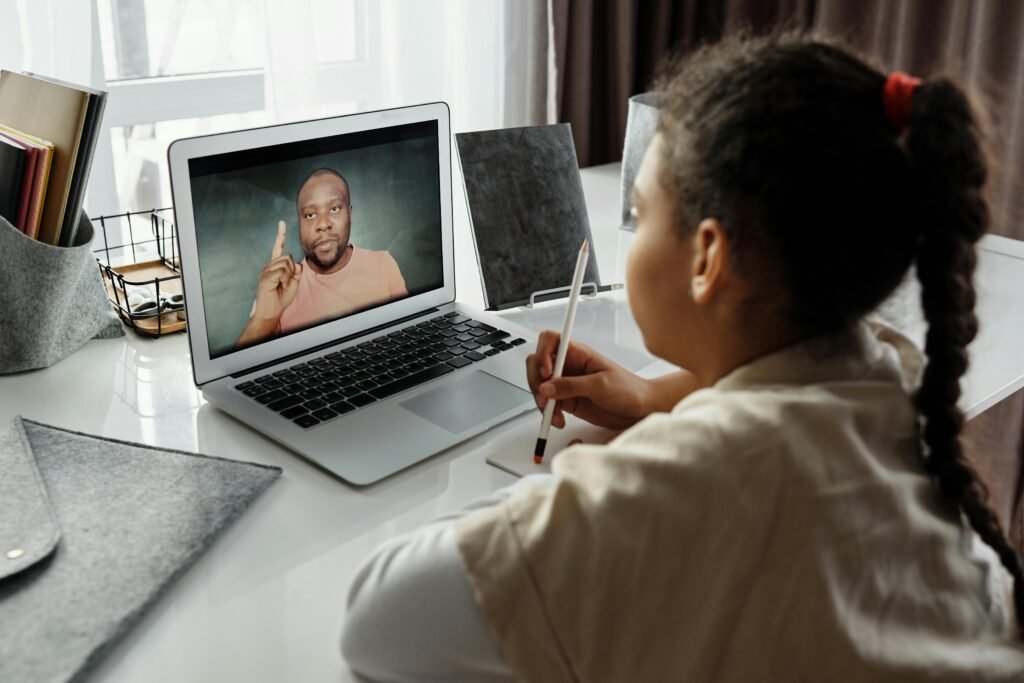
And when they start seeing results—faster studying, better grades, more free time—they’ll realize something important: real focus feels really good.
Conclusion:
The world isn’t going to slow down. Screens are here to stay. But how we use them? That’s something we can change.
The stats in this article aren’t just numbers. They’re signals. They’re telling us what’s happening in classrooms every day. Students are distracted. Teachers are overwhelmed. Learning is being lost. But here’s the good news: it doesn’t have to stay this way.
